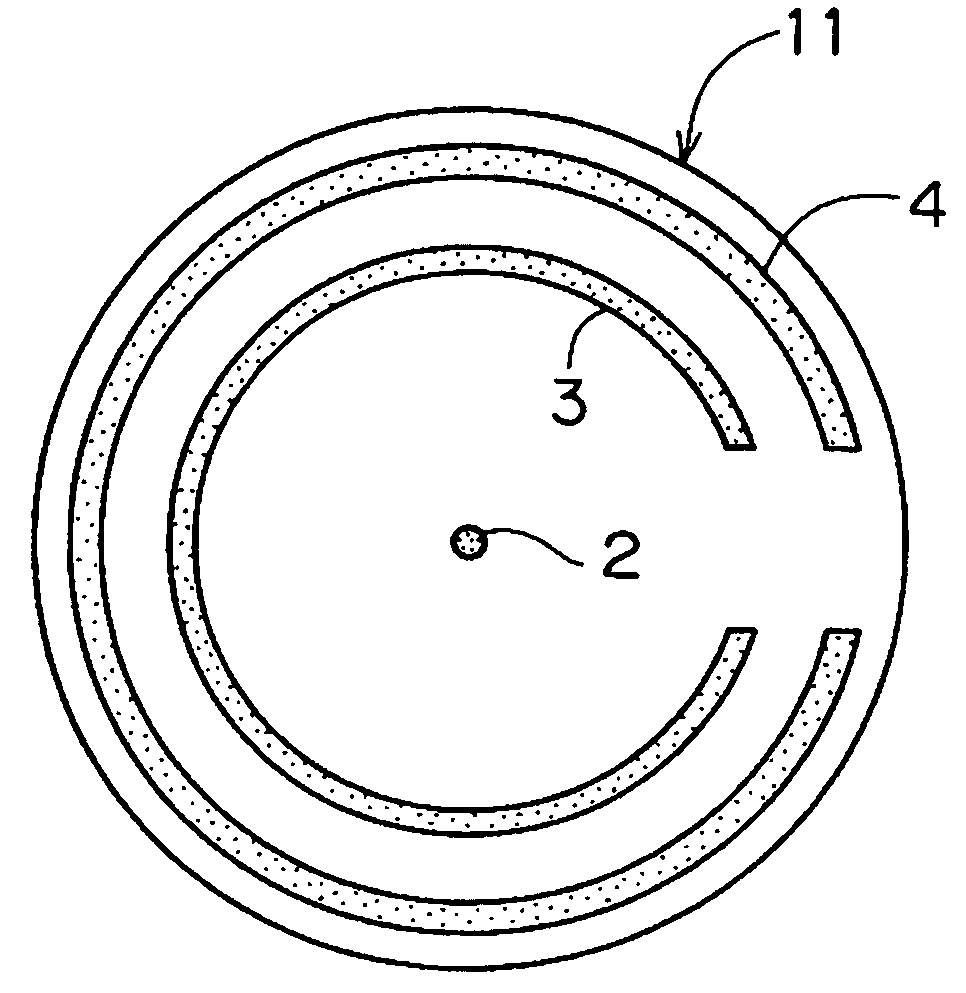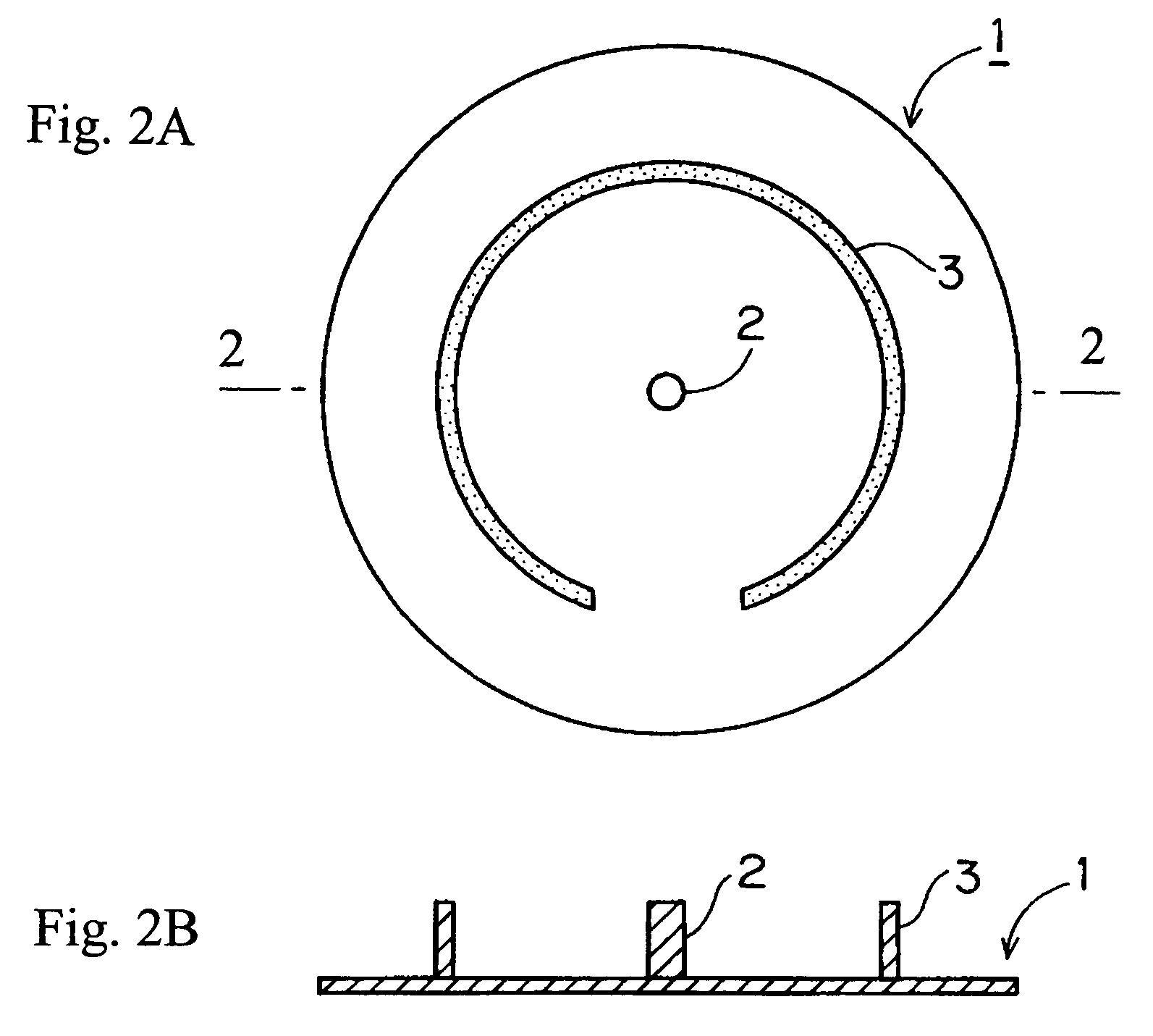Heat treatment jig for semiconductor silicon substrate
a heat treatment jig and semiconductor silicon technology, applied in the direction of charging supports, lighting and heating apparatus, furniture, etc., can solve the problems of low-density grown-in defects, affecting device characteristics, and progressively lowering temperatures and higher degrees of integration
- Summary
- Abstract
- Description
- Claims
- Application Information
AI Technical Summary
Problems solved by technology
Method used
Image
Examples
embodiment 1
[0059]Using the silicon carbide heat treatment jig of the present invention shown in FIG. 2, in which the heights of both the circular arc part and central projecting part were set at 5 mm, and the silicon carbide heat treatment jig of the present invention shown in FIG. 3, in which the circular arc height was set at 2 mm and the height of the central projecting part was set at 5 mm, these jigs were set in a heat treatment boat beforehand, the silicon substrate was automatically transferred, and a heat treatment similar to that performed in Comparative Example 1 was performed. The transferred silicon substrate was observed using X-rays, and the conditions of slipping were checked.
embodiment 2
[0060]The heat treatment jig of Embodiment 1 of the present invention was subjected to a heat treatment for 4 hours at 1200° C. in a 100% oxygen atmosphere. Afterward, the oxidation film that was grown on the heat treatment jig was stripped away by means of an aqueous solution of hydrofluoric acid. After this operation was repeated three times, a heat treatment similar to that performed in Embodiment 1 was performed. The transferred silicon substrate was observed using X-rays, and the conditions of slipping were checked.
embodiment 3
[0061]Using the silicon carbide jig of the present invention constructed as shown in FIGS. 6A and 6B, in which the heights of both the circular arc parts and the central projecting part were set at 5 mm, this jig was mounted in a heat treatment boat beforehand, the silicon substrate was automatically transferred, and a heat treatment similar to that performed in Comparative Example 1 was performed. The transferred silicon substrate was observed using X-rays, and the conditions of slipping were checked.
PUM
| Property | Measurement | Unit |
|---|---|---|
| thickness | aaaaa | aaaaa |
| thickness | aaaaa | aaaaa |
| temperature | aaaaa | aaaaa |
Abstract
Description
Claims
Application Information
 Login to View More
Login to View More - R&D
- Intellectual Property
- Life Sciences
- Materials
- Tech Scout
- Unparalleled Data Quality
- Higher Quality Content
- 60% Fewer Hallucinations
Browse by: Latest US Patents, China's latest patents, Technical Efficacy Thesaurus, Application Domain, Technology Topic, Popular Technical Reports.
© 2025 PatSnap. All rights reserved.Legal|Privacy policy|Modern Slavery Act Transparency Statement|Sitemap|About US| Contact US: help@patsnap.com



